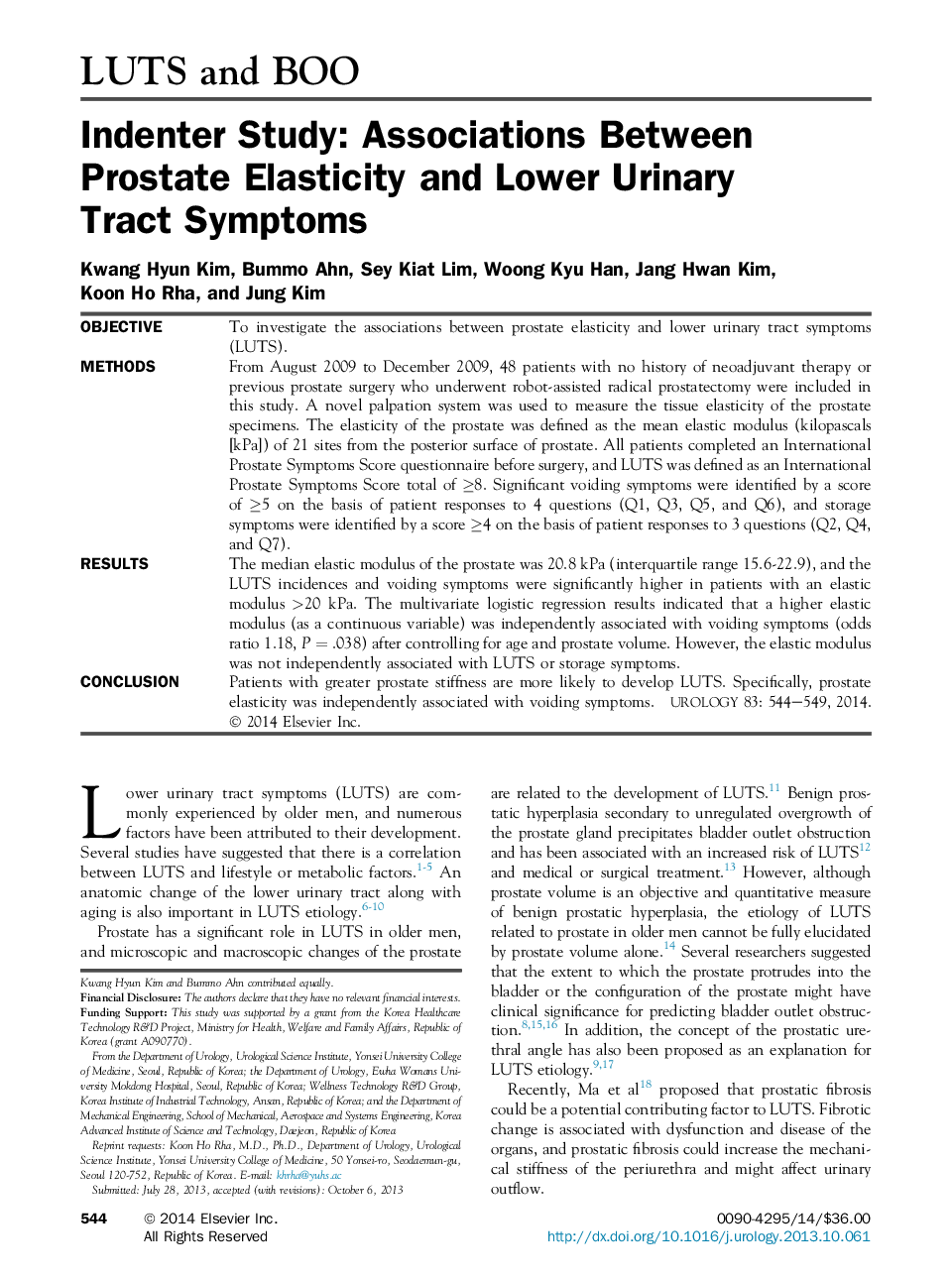| Article ID | Journal | Published Year | Pages | File Type |
|---|---|---|---|---|
| 3900227 | Urology | 2014 | 6 Pages |
ObjectiveTo investigate the associations between prostate elasticity and lower urinary tract symptoms (LUTS).MethodsFrom August 2009 to December 2009, 48 patients with no history of neoadjuvant therapy or previous prostate surgery who underwent robot-assisted radical prostatectomy were included in this study. A novel palpation system was used to measure the tissue elasticity of the prostate specimens. The elasticity of the prostate was defined as the mean elastic modulus (kilopascals [kPa]) of 21 sites from the posterior surface of prostate. All patients completed an International Prostate Symptoms Score questionnaire before surgery, and LUTS was defined as an International Prostate Symptoms Score total of ≥8. Significant voiding symptoms were identified by a score of ≥5 on the basis of patient responses to 4 questions (Q1, Q3, Q5, and Q6), and storage symptoms were identified by a score ≥4 on the basis of patient responses to 3 questions (Q2, Q4, and Q7).ResultsThe median elastic modulus of the prostate was 20.8 kPa (interquartile range 15.6-22.9), and the LUTS incidences and voiding symptoms were significantly higher in patients with an elastic modulus >20 kPa. The multivariate logistic regression results indicated that a higher elastic modulus (as a continuous variable) was independently associated with voiding symptoms (odds ratio 1.18, P = .038) after controlling for age and prostate volume. However, the elastic modulus was not independently associated with LUTS or storage symptoms.ConclusionPatients with greater prostate stiffness are more likely to develop LUTS. Specifically, prostate elasticity was independently associated with voiding symptoms.
